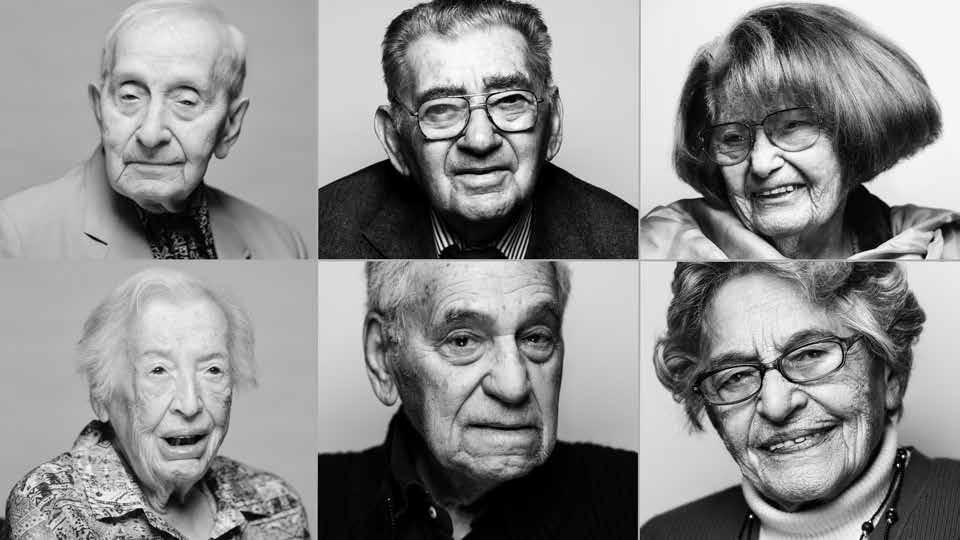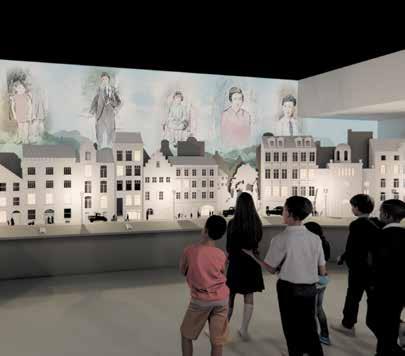
3 minute read
In the Footsteps
Our core exhibition –Everybody Had a Name –is set to open later in 2023. It will encompass six key sections following the chronology of the Holocaust, beginning with an introduction to the diversity and vitality of Jewish life in pre-war Europe and concluding with our local survivors’ arrival in Melbourne and how they began to rebuild their lives.
To invoke a more meaningful connection to the historical facts displayed at the museum, we are creating an engaging, interactive audiovisual overlay to our core exhibition called In the Footsteps. This additional experience will allow visitors to notionally walk alongside a survivor who came to Melbourne after the war and encounter their personal stories at five interactive stations, hearing clips from their testimonies and seeing their photographs, documents and artefacts.
Advertisement
This comprehensive digital project, initiated by MHM CEO Jayne Josem, and created by MHM Creative Director for Multimedia Arek Dybel, in partnership with cutting-edge digital designers, Sandpit, will help bring survivor experiences to light by harnessing innovative digital solutions to present a personal and tailored user experience.
Meet the survivors
The six survivors who visitors will encounter have been, or still are, long-term volunteers at the Melbourne Holocaust Museum. They represent a diversity of experiences of the Holocaust as well as a geographical spread.
Irmgard Hanner OAM was born in Dresden, Germany in 1930. In 1942, at age 12, Irma was deported to Theresienstadt ghetto/camp in Czechoslovakia. Irma was only 14 when liberated from the camp.
Kitia Altman OAM was born in Bedzin, Poland. She was 17 when the war broke out. Kitia was incarcerated in Auschwitz and Ravensbruck camps before being sent to Bensdorf where she worked in a munitions factory.
Abram Goldberg OAM was born in Lodz, Poland, in 1924 and was eventually incarcerated in Lodz Ghetto. In 1944 Abe and his mother were sent to Auschwitz concentration camp. Abe was sent to a series of camps before being liberated in 1945 in Wobbelin.
George Ginzburg was born in 1923 in Danzig, Germany, but his family moved to Berlin when he was two. In 1940 George was sent to Auschwitz, where he spent the next five years, including working in an armament factory. In 1945 George was sent on a death march, escaped, and was found by American soldiers.
Stephanie Heller and her twin sister Annetta were born in 1924 in Prague. In 1943 they were sent to Auschwitz, where Dr Josef Mengele chose the twins to be part of his medical experiments. However, the twins were evacuated on a death march before they could be subjected to medical experimentation.
Wilhelm Lermer OAM was born in Krakow, Poland, in 1923. After the war started, he was sent into forced labour by the Nazis. Willy was deported to numerous camps and suffered extreme brutality before arriving in Auschwitz. From there, he endured further torture, and when finally liberated, he was barely alive, 180cm tall but weighing only 38kg.
The visitor experience
Before entering the exhibition, visitors can choose one of the six survivors and receive a special postcard to take with them into the exhibition. They will then follow this survivor’s journey as part of a fully integrated tour, accessing their stories in each gallery.
As the visitor journeys through the displays, the card will trigger detailed content relating to the survivor they have chosen to walk with at each of the five stations positioned with the exhibition displays:
1. The world that was – an introduction to their lives before the war
2. Rights removed – the early forms of discrimination they experienced
3. Freedoms lost – incarceration in ghettos and camps
4. Life unworthy of life – murder of family members
5. Survival against the odds & Return to life – how they survived and rebuilt their lives
In the Footsteps gives people the opportunity to look into the face of a survivor at a life-size scale and hear them speak directly. This transformational journey will humanise the historical significance of the Holocaust and its relevance today.
By enabling our visitors to access first-person accounts and evidence, through this multi-dimensional experience, we hope they connect directly to the history in a powerful and memorable way, and thus ensure the collective responsibility of Holocaust remembrance will endure.
Left: Art Processors’ render design of The Village. A collective experience full of life and detail that evokes Jewish communities in Europe and highlights the experiences of our survivors before and at the start of WW2.

Opposite: Art Processors’ render design of museum introduction. Large-scale survivor portraits greet visitors as they enter the space. Visitors meet the Melbourne-based survivors as children and identify points of connection and common experience such as family life, hopes and identity.






